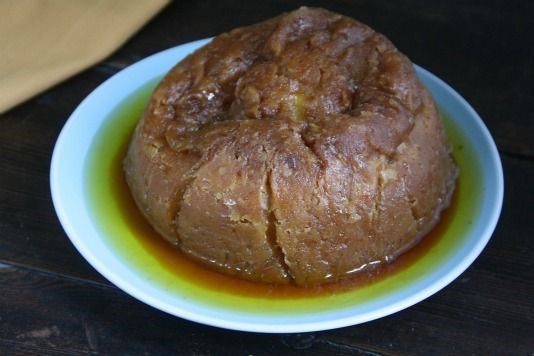Who put the lemon in the Sussex Pond Pudding?

The inspiration behind Heston's Christmas puddings and a modern restaurant classic, but this steamed suet pudding isn't as traditional as it seems
A thick beef suet crust standing guard around a pulpy lemon, with a stream of buttery brown sauce pouring from its heart, Sussex Pond Pudding is never going to win ‘most beautiful dessert’ in a pudding parade. But while the easy good looks of trifle or fruit jellies are beyond it, this steamed pud has still made it into the modern culinary hall of fame, thanks mostly to Heston Blumenthal.
Heston’s hyper-selling Hidden Orange Christmas Pudding was inspired by Sussex Pond Pudding and you’ll find Sussex Pond Pudding on the menu of his restaurants in London and Bray. And where Heston leads, others quickly follow. Sussex Pond Pudding has started turning up in restaurants that cheerlead for traditional British cooking, such as Marcus Wareing’s Gilbert Scott.
Enter the lemon
This lemon and suet pastry bomb is leading the proper pudding charge, bringing steamed puddings back to our dessert trolleys decades after they fell out of fashion. But while Jane Grigson called it ‘the best of all English boiled suet puddings’ in her book English Food, just how traditional is it really?
The lemon is key to the modern pudding’s success, giving the sugar-and-butter sauce that puddles around the pudding a tart citrus flavour that lightens the suet pastry, and adding a bit spectacle when the brown crust is cut away to reveal the pudding’s sunshine yellow centre.
But the lemon is a 20th century innovation. Pinning down when and where is impossible, but sometime between 1950 and the 1974 publication of English Food, one creative cook stuffed a pond pudding with a lemon and created a classic.
Sugar, spice and suet
Before the lemon, there was, as there always is with British puddings, dried fruit and spice. A 17th century recipe by Hannah Woolley in The Queen-like Closet is a spiced butter pastry case filled with butter and boiled in a pudding cloth. When the pudding is cut open ‘there will be as it were a pound [pond] of butter’.
Florence White’s Good Things In England (published 1932) gives a recipe for a similar pudding that was sent in by Mr Glover, who ate it ‘boiled in a cloth (the correct way) in 1905 by an old cottage woman in the village of Westham’. His Sussex Pond Pudding has a suet crust flavoured with currants and sugar that’s rolled around a ball of sweetened butter.
The addition of currants makes Mr Glover’s pudding a close cousin of Kentish Well Pudding, which typically has currants worked into the crust or, more recently, packed around a lemon with the sugar and butter.
Whatever Sussex Pond Pudding’s origins, it has endeared itself to contemporary cooks and pudding fans. A chunk of sturdy pastry soaked with sweet-sharp citrus sauce will bring most meals to a satisfying end and it’s also very easy to make. Dig out your pudding basin and click here for my Sussex Pond Pudding recipe.
Interested in more British puds, modern and traditional?
Comments
Be the first to comment
Do you want to comment on this article? You need to be signed in for this feature